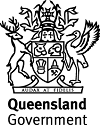Published Wednesday, 25 June, 2008 at 08:00 AM

Minister for Sustainability, Climate Change and Innovation
The Honourable Andrew McNamara
Initial Townsville dust monitoring shows no cause for concern
Initial test results for metal concentrations in Townsville dust have not highlighted any cause for concern about the quality of the city’s air.
Minister for Sustainability, Climate Change and Innovation, Andrew McNamara, said the metals results were the first from new sites established as part of the State Government’s expanded dust monitoring program in Townsville.
“The first test results for April show no cause for concern,” Mr McNamara said.
“However, this is a twelve month dust monitoring program, and results might vary depending on various conditions.
“Monitoring for twelve months will ensure that the influence of a range of weather conditions is reflected in the monitoring results.
“The latest dust monitoring reports indicate that metal concentrations of lead, copper and zinc are all well within internationally accepted guidelines.
“Cadmium, arsenic and nickel were not detected in the initial testing of the dust samples.
“However, dust storms did result in the standard for particulates being exceeded on two days in April.”
Mr McNamara said monitoring stations were set up at Yarrawonga, North Ward, Townsville City and South Townsville to capture the areas of concern identified by the Townsville community.
The monitoring program is also testing for beryllium, cobalt, chromium, manganese, molybdenum, antimony, selenium, and vanadium but again no trace of these metals were found in the initial tests.
“These metals have been selected as they are indicative of the kinds of emissions that could be expected from industry in Townsville.”
“In addition to the monthly reports, quarterly reports analysing the monitoring results will be published by the EPA,” Mr McNamara said.
“The EPA will continue to liaise with Queensland Health for advice on any health-related issues as the program progresses.”
The collection and analysis of metal concentrations takes a number of weeks, so the report will be available on the website within two months of the collection of dust samples.
This is because filters are collected at the end of each month, sent to the government testing laboratory, SIMTARS, for processing, and the results are then analysed by EPA air scientists.
Results for the May testing program are expected to be published in July.
The results of the dust monitoring can be found on the EPA website at :
Media contact: Emma Parnell 3336 8002

